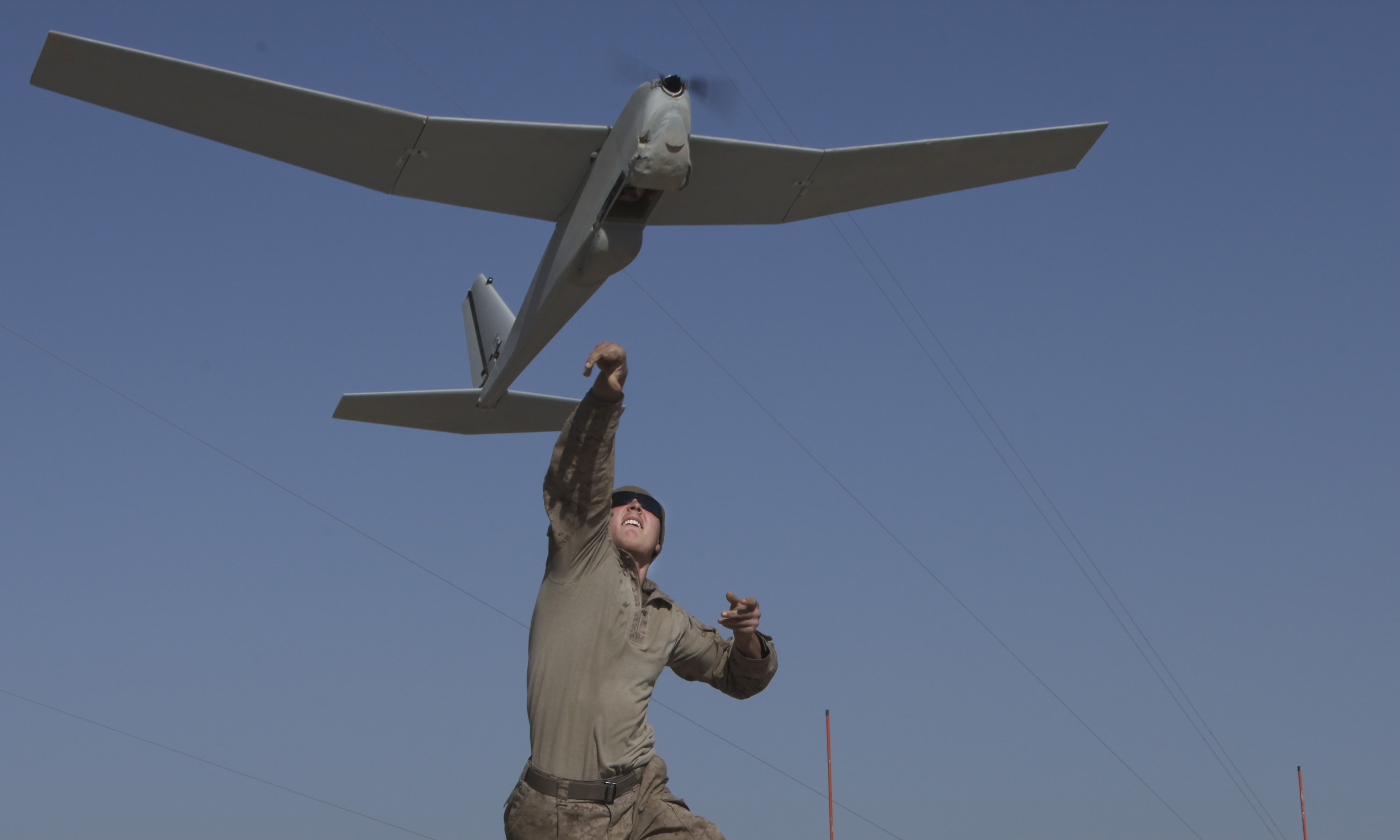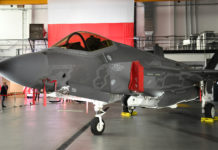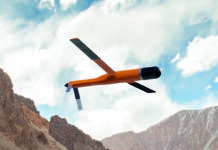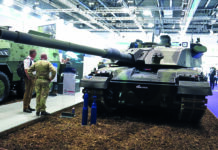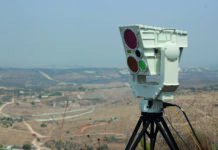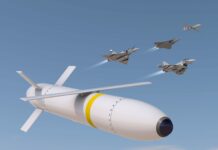Western military powers rely on sophisticated and precise weapons to deter and defeat asymmetric and near-peer opponents. To be effective, such weapons are matched with accurate information regarding their targets, such as location and status.
When time-critical targets are involved, this information needs to be provided rapidly, otherwise, the target may relocate. The process defined as a ‘Sensor to Shooter’ (STS) cycle represents the process of carrying out an attack. It relates to Intelligence, Surveillance, Reconnaissance, and Target Acquisition (ISTAR) assets, information processing, decision-making, and the weapon systems involved. The ability to rapidly progress through the various stages of this process is critical for modern armies, from the tactical to the strategic levels.
From Kill Chain to Kill Web
The STS cycle has many synonyms, among the most common is the ‘Kill Chain,’ defining the process from the appearance of a target, through planning and authorisation, to target engagement. Traditionally, the kill chain reflects a linear set of procedures associated with the individual elements involved in the process. However, maintaining discrete kill chains for each target are not always suited to urgent requests or taking advantage of brief opportunities. Modern armies have sought to accelerate this process through streamlined data sharing, faster datalinks, automated processes, and parallel tasking, resulting in a ‘kill web’ with the ultimate goal to enable strikes within seconds rather than minutes or hours.
In a military relying on precision effects, sensors are as crucial as the effectors. Frequently, improving sensors contributes to increasing strike efficiency more than upgrading the weapons, as improving sensors and information processing provides more engagement opportunities and elevates the probability of successful engagements. Such improvements may include increasing the number or variety of sensors feeding the ‘sensor to shooter’ system and expanding bandwidth to increase the speed and depth of the information transfer and the quality of information delivered. Creating a ‘sensor web’ of multiple different sensors enables the fusion of several feeds, improving the probability of detecting concealed targets and providing more accurate information for the shooters.
Sensors are often co-located with a weapon, creating close-knit sensor-to-shooter systems, but in other scenarios, sensors, Command & Control (C2), and shooters are distributed. As sensor data is transferred over wireless networks, bandwidth limitations, electronic attacks, and interference can cause congestion and delay information flow and processing. Satellite links are particularly vulnerable to these disruptions. Modern mesh networks have inherent resilience to withstand such challenges and are often used in contemporary sensor networks. In cases where weapon systems are relatively close to each other, such networks can provide a ‘tactical cloud’ allowing communication even in the face of jamming.
Drone maker AeroVironment has introduced an example of a close-knit STS system comprising a surveillance drone – PUMA 3 AE coupled with the SWITCHBLADE 300 loitering munition. The operator can use the SWITCHBLADE 300 STS Kit to monitor both systems using the same display, allowing them to see the PUMA 3 AE’s sensor view before and after the attack, alongside the feed from the loitering munition’s camera as it closes on the target. The sensors and datalinks of the two systems are designed to synchronise with the map view displayed on the same control unit. This process simplifies and accelerates responses to targets of opportunity encountered on surveillance missions. Both sides in the Russia-Ukraine War have employed this cross-UAV hunter-killer teaming.
Streamlining the Process
Streamlining processes across echelons, domains, and coalition partners is much more complex. A case in point is the artillery counterfire mission, as seen in Ukraine. Artillery fires follow structured, detailed planning and fire direction processes before the first round is fired. But executing a counterfire against enemy artillery targets must be shorter, as the target are often ‘short-lived,’ especially when mobile rocket launchers and self-propelled artillery are involved. Such missions rely on various sensors such as acoustic sensors, radars, to detect enemy fires, and use computers to calculate enemy fire trajectories and extrapolate the hostile fire position. This process therefore needs to be conducted rapidly before the enemy can leave their fire position. In the counterfire STS cycle, both sensor and shooter are operated by the artillery, often at the division or corps level. They share networks, procedures, and message formats to rapidly process the information and execute a counterfire mission.
At very long ranges, responding to hostile fires requires more sensors to provide sufficient coverage. For instance, responding to ballistic missiles with ranges of hundreds of kilometres would require targeting information based on higher echelon sensors and intelligence sources that may not be available to the shooters. The US Army plans to integrate new communications satellites deployed in Low-Earth Orbit (LEO) called the Tactical Space Layer (TSL), along with the Tactical Intelligence Targeting Access Node (TITAN) ground station to support the requirement for shortening the sensor-to-shooter cycle at long ranges.
Another consideration is the connectivity between sensors and information systems, which can be lengthy and complex. When operating at the tactical level, the sharing of a single communications layer shared between sensors and shooters can simplify connectivity, while automation can be used to decrease the cognitive burden on operators.
Although accelerating the STS cycle requires improving many elements, it often consists of flattening hierarchies and clearing barriers in extant processes. Another means of accelerating the process is machine-to-machine connectivity, which can be most readily achieved at lower levels. Such solutions are more challenging to implement at higher echelons, particularly in joint and multinational coalition operations, where connectivity among diverse information systems and data-sharing standards becomes necessary. Sometimes, bringing two officers together in a single room may solve long delays better than automation. Other solutions involve the introduction of information translators to streamline connectivity between different computing systems. Once information systems can talk to each other, additional enhancements can be introduced, such as using machine learning and artificial intelligence to process large volumes of data.
Connecting All sensors and Shooters
In a modern kill web, sensors can upload their feed to a tactical cloud, forming a network shared by many sensors and users instead of linking a specific sensor to a particular user. To minimise upload bandwidth requirements, feeds can be pre-processed with artificial intelligence and machine learning to perform Automatic Target Recognition (ATR) and data mining. Uploading these events with their time-critical data is prioritised, along with other feeds that could be meaningful for some users. Further processing can be done in the cloud, including measurements, situational assessment, and correlation with other sensors, to generate additional information that may be needed in the decision-making process.
The Joint All Domain Command & Control (JADC2) pursued by the US Department of Defense (DoD) is the manifestation of the kill web concept, aimed at increasing interoperability and decision-making speed. Although such a network is promising in theory, its implementation is complex, particularly in the land domain, and its continuous operation in a contested environment cannot be guaranteed. Therefore, users should maintain the capability to deal with situations where a part of JADC2 is denied or degraded, and forces are required to operate in an isolated fashion.
The US Army has been testing some of the JADC2 aspects in the annual multi-dimensional ‘Project Convergence’ (PC) exercises, connecting systems and capabilities from the Army, Air Force, Navy, Marine Corps, and Space Force. Last year’s exercise (PC21) combined multiple Intelligence, Surveillance, and Reconnaissance (ISR) and weapons platforms into the Army’s kill web mesh network to produce a detailed real-time common operating picture (COP). This endeavour relied on 110 new technologies and concepts.
At PC21, the Army employed its first of a planned five combat cloud servers for the Multi-Domain Task Force (MTDF) operational framework. Each combat cloud server is capable of processing a complete sensor-to-shooter system via satellite link, and one server is planned for each of the Army’s five MDTFs. Each MDTF is due to be respectively based in the continental US, Europe, the Pacific, and the Arctic, while the fifth will be designated as the global MDTF – an air-mobile unit ready to deploy a kill web anywhere in the world within 24 hours. Each MDTF cloud server runs four AI programs to automate the kill web, known as RAINMAKER, PROMETHEUS, FIRESTORM, and SHOT.
Four Knights of the Kill Web
At PC21, RAINMAKER connected 15 sensors and 19 weapon systems to a combat cloud via satellite link. RAINMAKER translates data from different sources, each having its own ‘language.’ At PC21, RAINMAKER also faced simulated challenges of electronic jamming, and deception of position, navigation, and timing (PNT) data by opposition forces as part of the exercise. To overcome those challenges, RAINMAKER implemented new jam-resistant waveforms over the radio frequency (RF) links and sought open communications channels to reconfigure the network to maintain sensor feeds.
The task of PROMETHEUS was to seek threats and targets in the sensor feed provided by RAINMAKER from the ISR platforms. Once targets were found, they were handed to the ‘Fires Synchronisation To Optimise Responses in Multi-domain operations’ (FIRESTORM) program, whose job was to match the best ‘shooter’ to the most appropriate target, based on the locations and status of each of the shooters connected to the system. For each target, FIRESTORM presented dozens of ‘sensor-target-weapon’ firing solutions to the battlefield commander. Once a selection is made, it is sent to the Synchronised High Optempo Targeting (SHOT) programme for execution. As the selected weapons receive the order to fire or launch within seconds, all other shooters associated with the task were released for different missions. At that point, PROMETHEUS takes over to perform battle damage assessment. The whole process involving this complex four-programme sequence takes only a few seconds.
The US Army’s first MDTF was established at Lewis-McChord in Washington State in 2017, while the second was established at the Clay Kaserne base in Wiesbaden, Germany in September 2021. The Army plans to activate its third MTDF at Schofield Barracks, Hawaii in 2023.
New STS Capabilities
Another sensor-to-shooter concept brewing in Israel is the development of ‘Storm Clouds’, involving the integration of new systems as part of a buildup of new units and capabilities. The 144th squadron activated at the Hatzor air force base on 3 August 2022 is a component of this concept. The new unit will operate Aeronautics’ ORBITER 4 UAV, providing the aerial ISR layer of the Israeli Defense Forces’ (IDF) ‘Storm Clouds’ programme. This ambitious system of systems is part of a comprehensive, automated wide-area surveillance, target acquisition, and automated intelligence processing system intended to empower small independent forces in operations.
The networking of sensors, battle management systems, weapons, and data processing systems allows them to become part of distributed ‘sensor-to-shooter’ systems. Rafael’s FIRE WEAVER is a sensor-to-shooter system intended for battalion-sized tactical formations. Rafael has recently introduced a sensor-to-shooter system for SPIKE NLOS, called SPIKE NLOS Mission Taskforce (SPIKE NMT). This system integrates the camera sensors on ORBITER-4 UAVs and Rafael BNET software-defined radio, with the FIRE WEAVER system. The system employs the SPIKE NLOS 6th Generation missile, which can be mounted on land platforms, giving a range of 32 km, or helicopter, giving a range of 50 km.
Sensor-to-shooter systems provide a promising means for militaries to keep pace on increasingly complex battlefields. Yet, as the experiences of many startup companies show, the key to successful implementation that wins over users is to take small, simple steps. Navigating vast and ultra-complex systems of systems may be simple for machines, but on the battlefield the human operator must come first.


